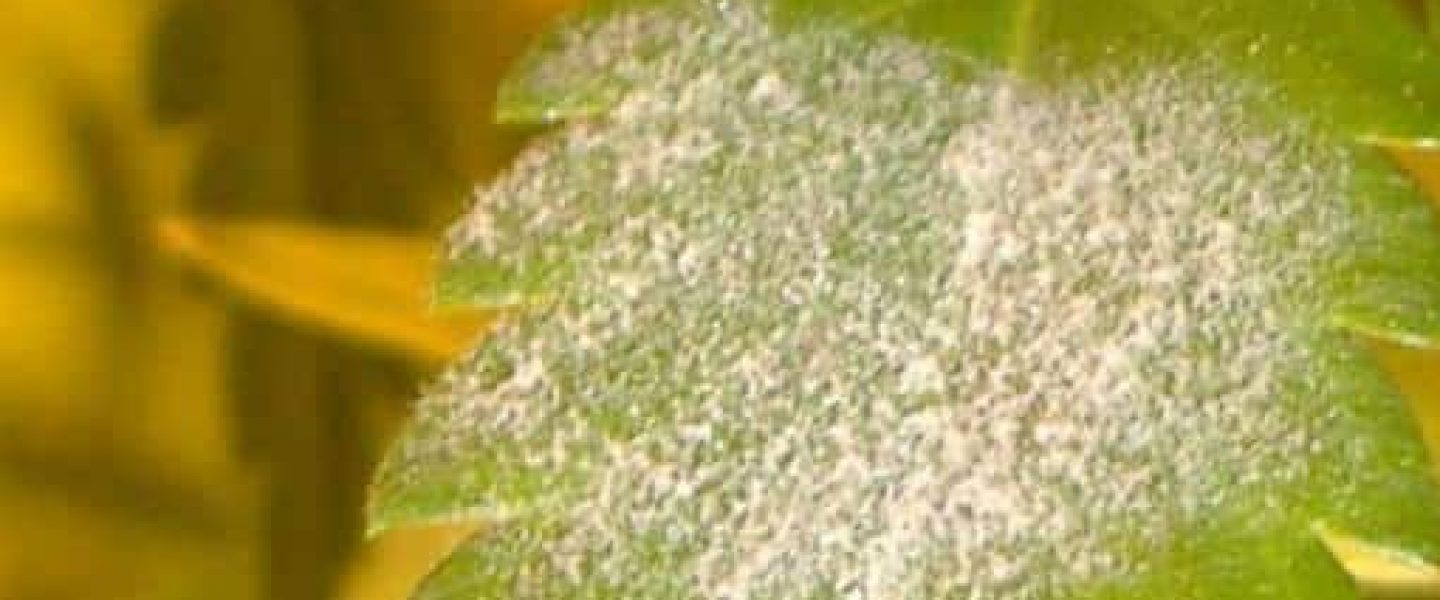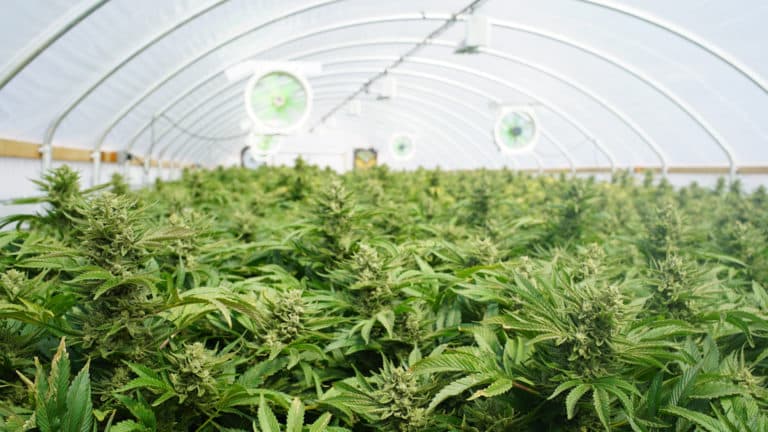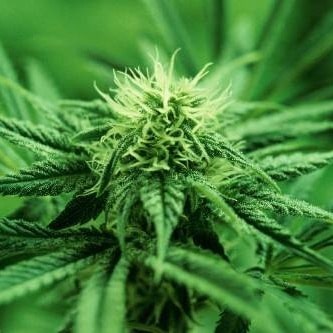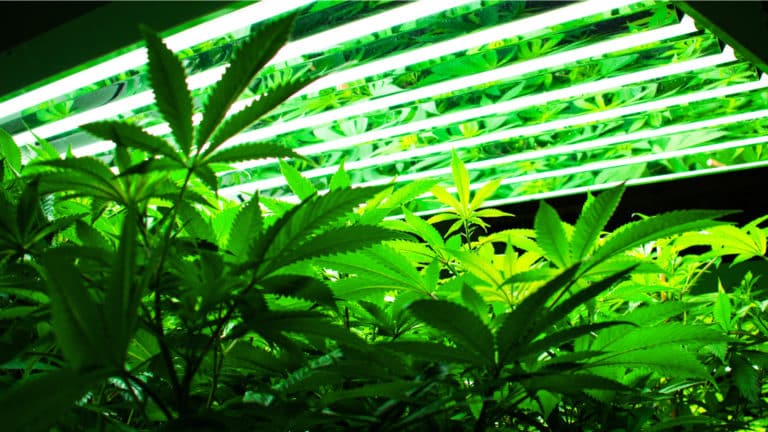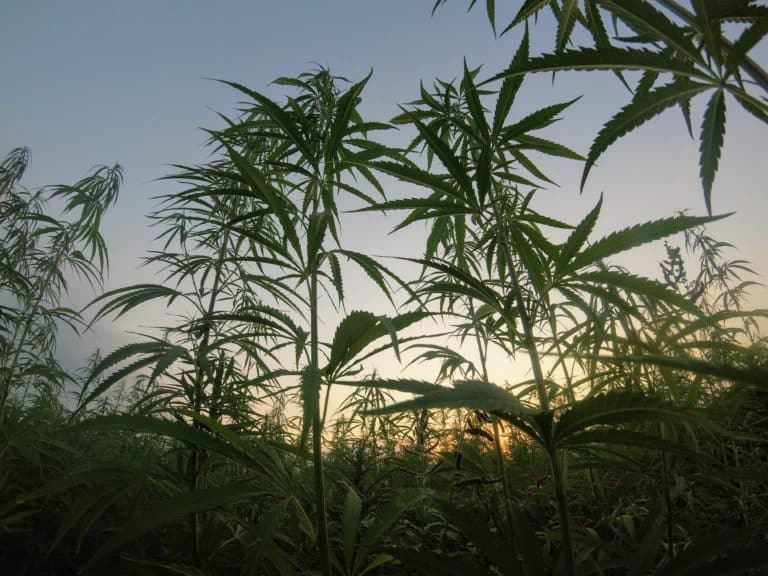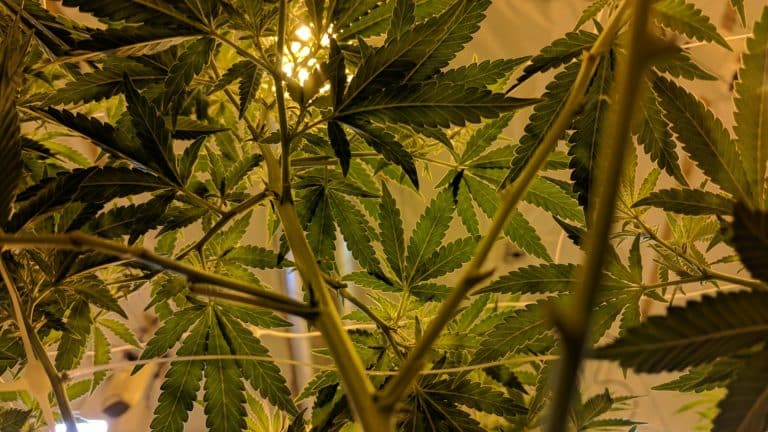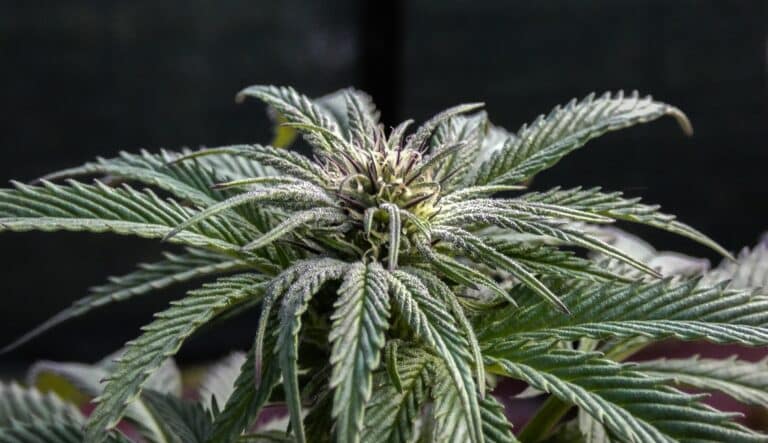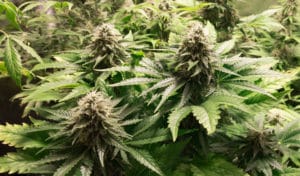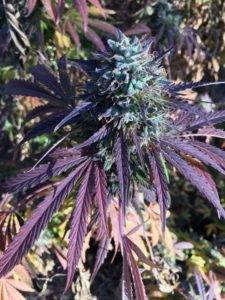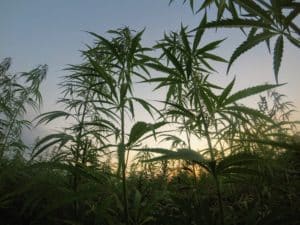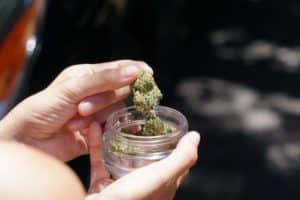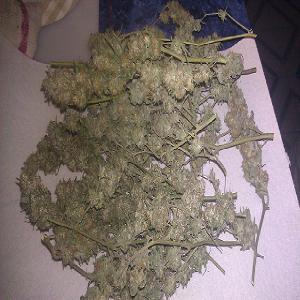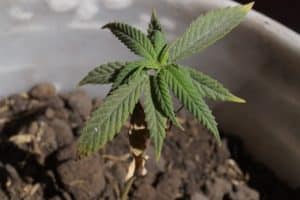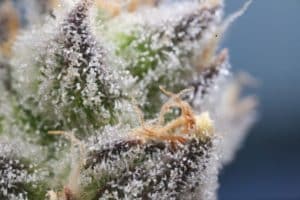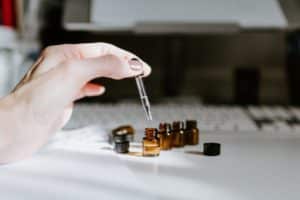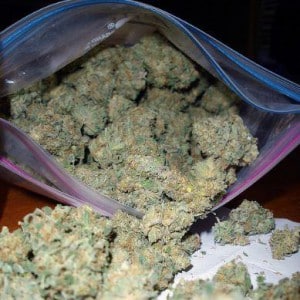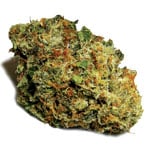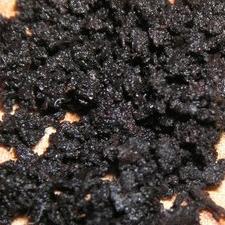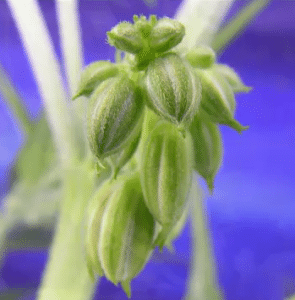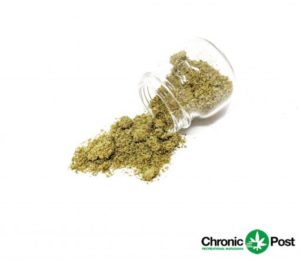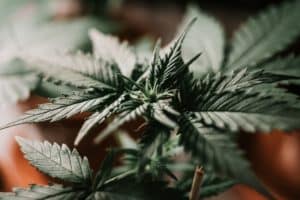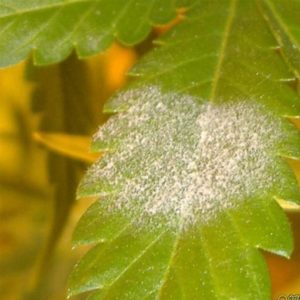 Getting Rid Of Powdery Mildew On Cannabis Plants Is Extremely Difficult, So Be Proactive And Get Out Ahead Of It
Getting Rid Of Powdery Mildew On Cannabis Plants Is Extremely Difficult, So Be Proactive And Get Out Ahead Of It
Like many Americans, I have a weather app on my phone. I was looking at it today on my morning break at work, and it looks like there is nothing but rainy days in the near future in the Willamette Valley of Oregon. If you live in Oregon, this likely does not surprise you. If it’s Fall in the Oregon valleys, that means there is rain. And if there is rain and moisture, powdery mildew is sure to follow.
I will never forget the first time that I got powdery mildew back when I was growing marijuana when I lived in a town called Silverton. I was growing a new strain for the first time (Trainwreck) and the plants were thriving. Then, shortly after I went from a veg light cycle to a bloom light cycle, that’s when I noticed it – a small dot about the size of a dime on a water leaf. That looked like baby powder residue. At the time I had no idea the amount of effort and toil I was about to endure.
I asked the guy I got the clones from, and he said that he had the same thing on his plants, and that it was powdery mildew. He sprayed his plants with absolutely foul smelling fish oil, and said that should more than take care of it. He gave me some, and I sprayed my plants with the fish oil. For a few weeks, it seemed to work just fine and I thought the matter was behind me. Boy was I wrong. The mildew came back, and it was on more plants.
I researched it a bit, and I found out that the powdery mildew likely actually started on the branches of the plant, and if it had reached the leaves, it was likely too late. I sprayed the plants again with the fish oil hoping it would help (among every other recommendation from many sources), but resistance was futile. By the end I chopped down all the plants in the two rooms I had in my house’s basement, and threw them in the trash. All of the nugs were underdeveloped, and either the nugs smelled like fish oil, or they had powdery mildew on them. The entire harvest was ruined.
I read up some more about powdery mildew, and many articles pointed out that powdery mildew spores are microscopic, and due to air circulation from fans, and my clothes entering and leaving the grow room, spores could be anywhere. So I hired some people to help me thoroughly clean the entire basement and the rest of the house from top to bottom. I rebuilt the rooms from the ground up, using all new temporary walls and mylar. All of the equipment was either completely new, or disinfected many times over.
I got new clones from someone else who lived in Central Oregon where there is way less moisture. Things were going great until a little after I turned the light cycle back to 12 on 12 off. The powdery mildew was back. I vividly remember that defeated feeling. By that time it seemed like everyone I knew that grew in Silverton was having a particularly bad year with powdery mildew, and had the same frustrations that I had. After cleaning up all of my gear, selling it to a friend in Central Oregon (same dude I got the previous clones from), I moved into a new house and got all new equipment, with new clones, and then, and only then, did I finally get rid of the powdery mildew.
As you can tell, fighting powdery mildew once you have it is HARD. The absolute best way to fight powdery mildew is to get way out ahead of it and prevent it from infecting your garden in the first place. If you live in the Pacific Northwest like me, and it rains a lot, than you will deal with powdery mildew at some point I’d imagine, and if you don’t, consider yourself lucky. All it takes is one spore being pulled in from an exhaust fan or on clothing and it’s enough to wreck your entire garden.
Below are some tips for preventing powdery mildew in the first place for indoor and outdoor gardens:
- Mildew likes to fester in dark, moist places. If your plants are outdoors, plant them where they will get the most sun possible. If they are indoors, obviously you can only fit so many directly under the light, so watch for powdery mildew in areas where there is less light. If you can afford it, get tracks so your lights can move back in forth increasing sun exposure.
- Don’t crowd plants together. Per above, powdery mildew grows in the shadows, and the more crowded the plants, the more shade. Also, it increases cross infection between plants when then are touching each other. A spore could still travel from one plant to the other if they aren’t touching, but if they are touching and one plant has powdery mildew, it’s almost guaranteed that the other one will get it very quickly.
- Air circulation is very important. Powdery mildew likes to fester in stale air. On the flip side, powdery mildew spores travel through the air, so if you spot and isolate the powdery mildew on one plant, turn off all fans until you get it removed to minimize circulating it around.
- Remove and discard any dead leaves and debri. This is standard to help fight against all plant diseases and bugs. Where there is debri, bad things happen.
So what do you do if you already have powdery mildew? Based off of my experience, I would personally say it’s best to just cut your losses, literally, and throw your plants away. Clean your grow area thoroughly, and know that even then there will always be the chance that it can come back because getting every single spore cleared out is nearly impossible since they are so small. But if you are feeling ambitious, and you think you can still salvage the situation, below are some things that you can do that I found online. If you live in a state that requires testing for cannabis before it is ever sold, realize that you will likely never pass a test if you have any mildew on your plants, and rightfully so. Like I said, nothing really worked for me, so take these tips for what you will:
From the University of California Davis:
Fungicides
Several least-toxic fungicides are available, including horticultural oils, neem oil, jojoba oil, sulfur, and the biological fungicide Serenade. With the exception of the oils, these materials are primarily preventive. Oils work best as eradicants but also have some protectant activity.Oils
To eradicate mild to moderate powdery mildew infections, use a horticultural oil such as Saf-T-Side Spray Oil, Sunspray Ultra-Fine Spray Oil, or one of the plant-based oils such as neem oil or jojoba oil (e.g., E-rase). Be careful, however, to never apply an oil spray within 2 weeks of a sulfur spray or plants may be injured. Also, oils should never be applied when temperatures are above 90°F or to drought-stressed plants. Some plants may be more sensitive than others, however, and the interval required between sulfur and oil sprays may be even longer; always consult the fungicide label for any special precautions.Sulfur
Sulfur products have been used to manage powdery mildew for centuries but are only effective when applied before disease symptoms appear. The best sulfur products to use for powdery mildew control in gardens are wettable sulfurs that are specially formulated with surfactants similar to those in dishwashing detergent (e.g., Safer Garden Fungicide) However, sulfur can be damaging to some squash and melon varieties. To avoid injuring any plant, do not apply sulfur when air temperature is near or over 90°F and do not apply it within 2 weeks of an oil spray. Other sulfur products, such as sulfur dust, are much more difficult to use, irritating to skin and eyes, and limited in terms of the plants they can safely be used on. Copper is also available to control powdery mildew but is not very effective.Biological Fungicides
Biological fungicides (such as Serenade) are commercially available beneficial microorganisms formulated into a product that, when sprayed on the plant, destroys fungal pathogens. The active ingredient in Serenade is a bacterium, Bacillus subtilis, that helps prevent the powdery mildew from infecting the plant. While this product functions to kill the powdery mildew organism and is nontoxic to people, pets, and beneficial insects, it has not proven to be as effective as the oils or sulfur in controlling this disease.How to Use
Apply protectant fungicides, such as wettable sulfur, to susceptible plants before or in the earliest stages of disease development. The protectant fungicides are only effective on contact, so applications must provide thorough coverage of all susceptible plant parts. As plants grow and produce new tissue, additional applications may be necessary at 7- to 10-day intervals as long as conditions are conducive to disease growth.If mild to moderate powdery mildew symptoms are present, the horticultural oils and plant-based oils such as neem oil and jojoba oil can be used to reduce or eliminate the infection.
If you want to start growing, you should download a free marijuana grow bible written by Robert Bergman. He knows a ton about cultivation, and since the book is free, you have nothing to lose. I always offer up that free resource. All top quality marijuana seeds are available at his marijuana seed shop too if you are in the market for those. Genetics are gaining in popularity as more and more people start growing, and I’d imagine if you are reading this article, you may fit into that category. For any growing related question you can also visit Robert’s marijuana support page (including questions related to powdery mildew and other plant menaces), which is a forum that I check out quite a bit for advice and tips.


